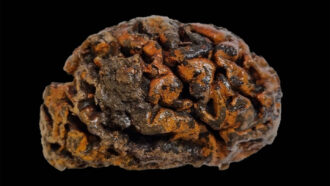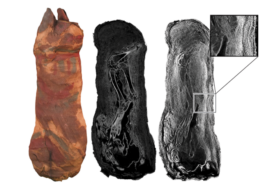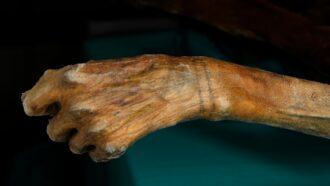Decoding a beverage jar
Ancient pottery provides hints of the world's oldest known wine.
It’s a good thing that people in one ancient Chinese town didn’t always thoroughly rinse out their beverage jars. Now, the leftover liquid that soaked into the pottery more than 8,000 years ago is providing scientists with clues to the past.
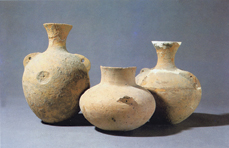 |
|
Researchers found traces of a wine-like drink in fragments of 9,000-year-old Chinese jars like the three shown above.
|
| Photograph courtesy of Zhiqing Zhang, Institute of Cultural Relics and Archaeology of Henan Province, Zhengzhou, China |
When archaeologists digging in the village of Jiahu found bits of the jars, they wanted to discover what the vessels once contained. To do this, the scientists put a special set of chemical techniques to work.
First, the archaeologists used chemicals to separate the remains of the drink from the pieces of pottery. Then they used five different methods to identify the chemical compounds in the ancient liquid. In the final step, the scientists compared these chemicals with the chemicals that are found in ingredients that the Chinese might have used to make the drink, such as fruits or grains.
The archaeologists concluded that the ancient Chinese probably used a mix that included rice, honey, and fruit (hawthorn or wild grape). To the researchers, these ingredients looked awfully similar to those in a modern-day recipe for rice or grape wine.
This result suggested that the researchers had found traces of what would be the world’s oldest known wine.
The archaeological team also compared their findings to some Chinese wines that had been made about 3,000 years ago. In this case, the researchers had larger samples to work with.
The newer wines had been found in bronze jars in tombs of high-ranking Chinese officials. The jars had been sealed shut, trapping the beverage inside. When they opened the jars, the scientists found a drink that one described as having a “delicious aroma and light flavor.”
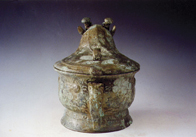 |
|
A 3,000-year-old Chinese bronze jar was found to still contain a rice or millet wine.
|
| Photograph courtesy of Zhiqing Zhang, Institute of Cultural Relics and Archaeology of Henan Province, Zhengzhou, China |
Chemical tests on the ancient beverage suggested that the methods for making wine 3,000 years ago were very similar to the methods used today for making traditional Chinese wines.
Thanks to some chemical detective work, a drop of liquid gave archaeologists a jar-full of new ideas about an ancient culture.





